All products featured are independently chosen by us. However, SoundGuys may receive a commission on orders placed through its retail links. See our ethics statement.
Beats Powerbeats vs. Beats Powerbeats Pro
August 29, 2023
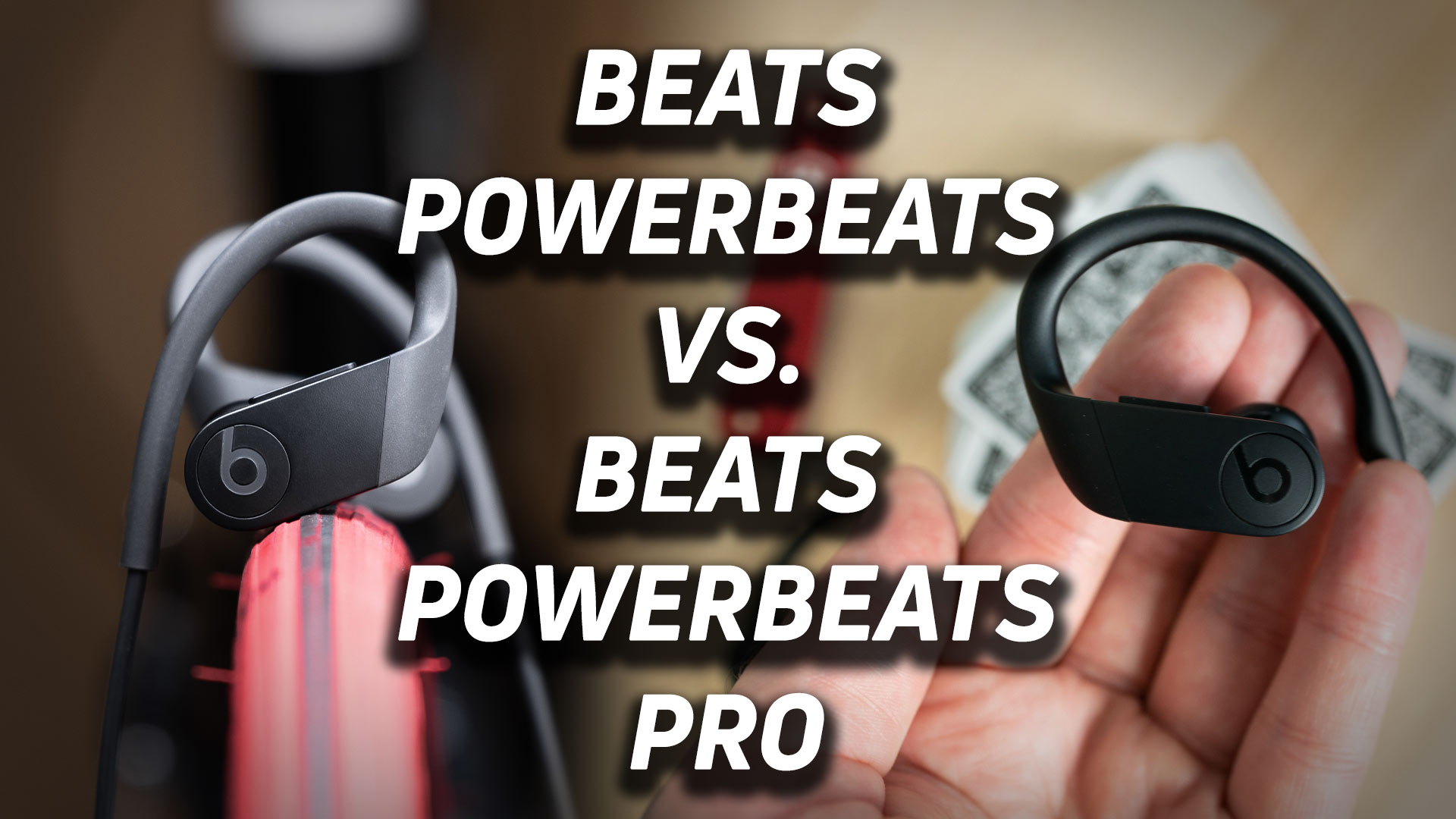
Choosing between the Beats Powerbeats Pro and the Beats Powerbeats is like asking someone if they prefer peaches or nectarines. In both instances, the genetics are essentially identical with just a few minor variances. In today’s breakdown, we’re pitting the influential company against itself—each headset has its place, but which is the absolute best for you?
The Beats Powerbeats has been officially discontinued, this article remains as a historical guide for those who need it.
Editor’s note: this article was updated on August 29, 2023, to note the end of the Beats Powerbeats’ availability.
The Beats Powerbeats Pro and Powerbeats are nearly identical
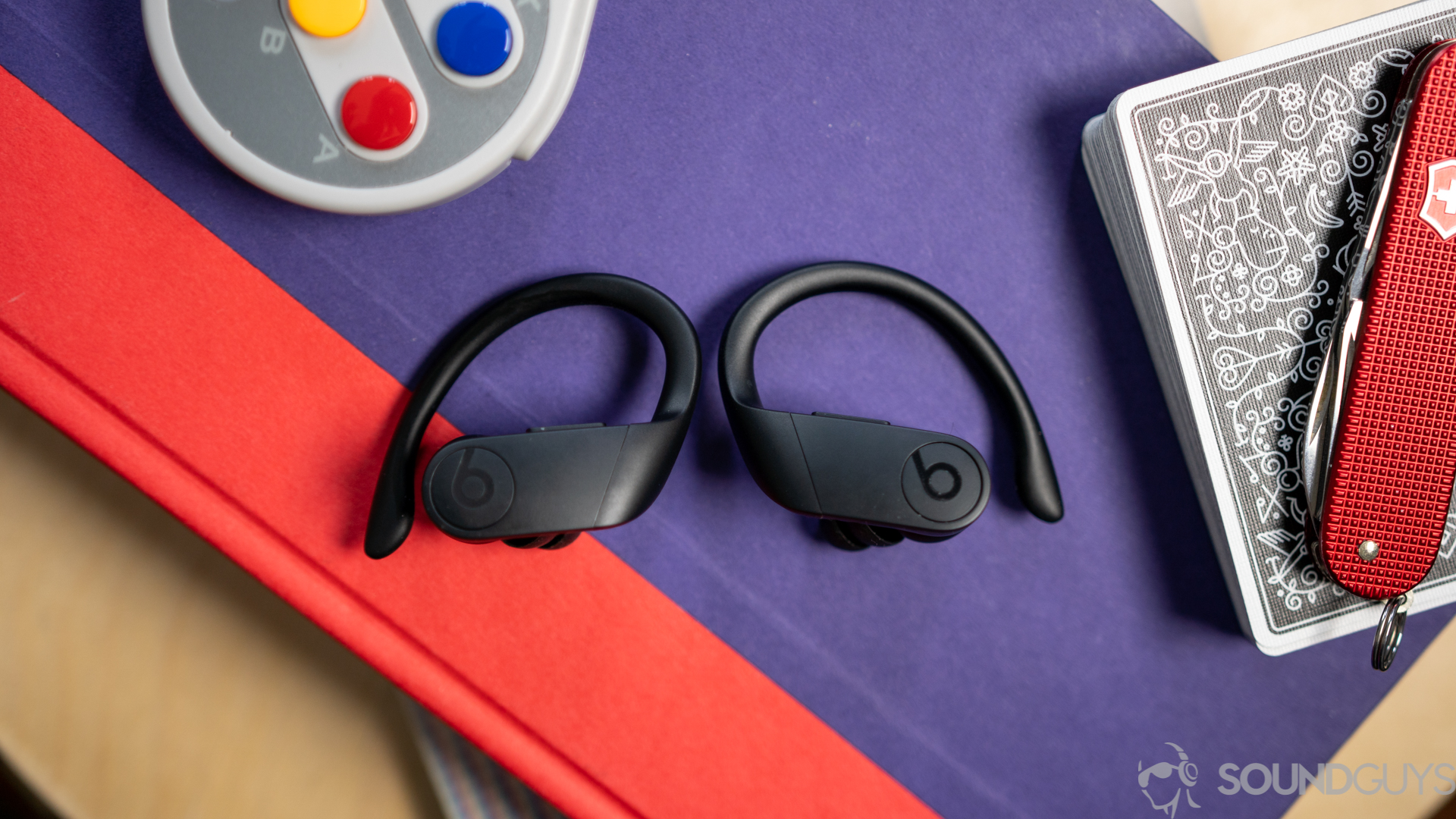
Aside from the rounded cable that joins the Beats Powerbeats housings, dubbing it as wireless rather than true wireless, the headsets in question are practically indistinguishable. Both the Powerbeats and Powerbeats Pro ear hooks are easy to adjust for a secure fit no matter the size of your ears. Beats used angled nozzles that conform to the ear canal for a comfortable fit, and better isolation than 90° nozzles provide.
The Powerbeats Pro includes a charging case, which is the norm for all true wireless earbuds; this serves as a way to store the earbuds and tops them up when not in use. The case doesn’t support wireless induction charging and uses the same Lightning input as the lower-tier wireless earbuds. While the case is useful, it’s very bulky and takes away from the portability factor that entices most consumers. On the other hand, the Beats Powerbeats includes a drawstring carrying pouch. It isn’t very protective, but it’s more portable and keeps the cable from getting tangled.
Apple’s H1 chip is integrated into both Beats headphones, so regardless of which Powerbeats you get, you’re afforded all the same benefits like optimal power efficiency, easy iOS device switching, hands-free Siri access, and more. Android users aren’t granted the same features, as these are limited to iOS devices like the iPhone and iPad.
Onboard controls and virtual assistant access
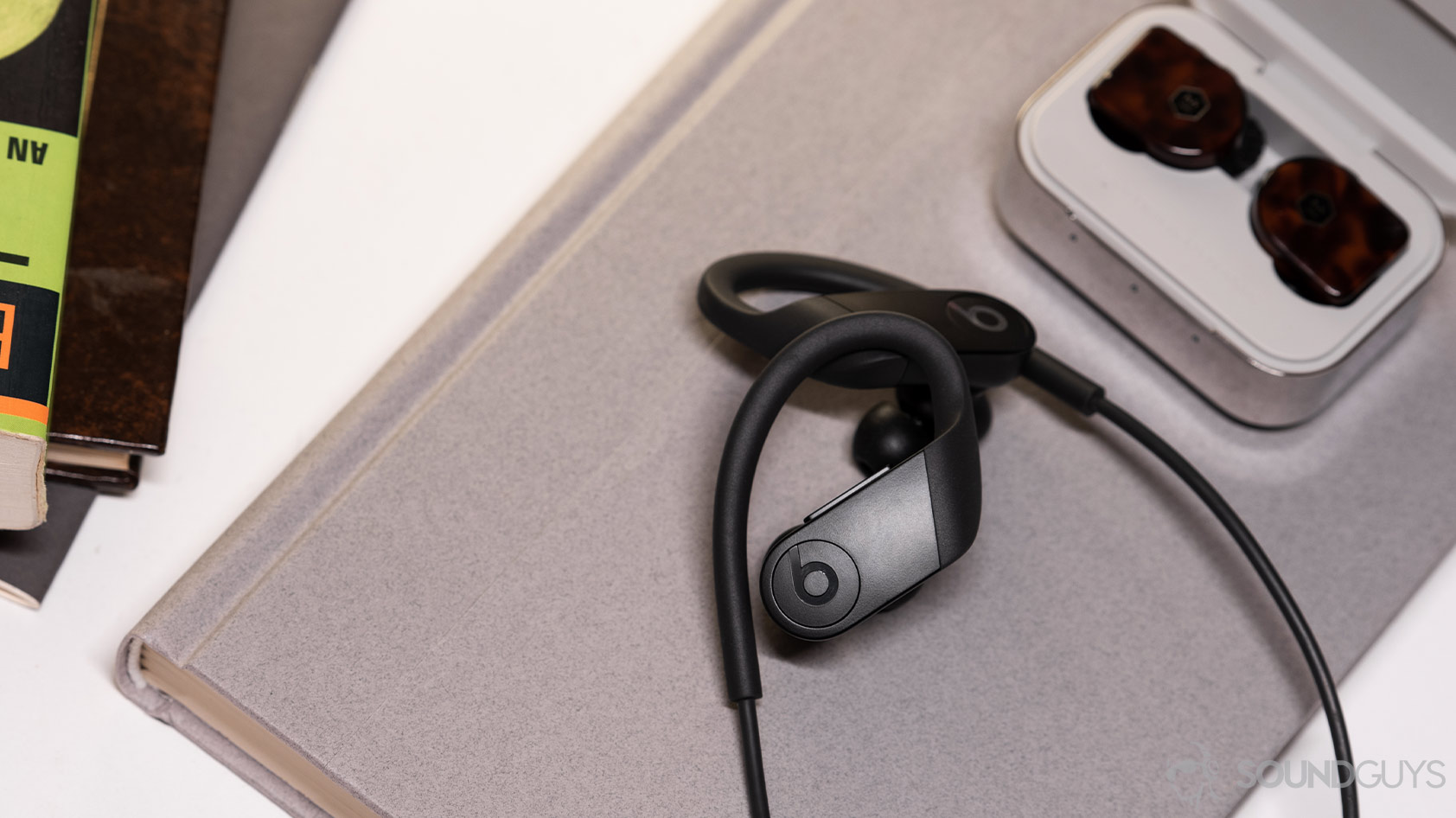
Beats’ premium and economical Powerbeats models both rely on buttons to control playback, accept or reject calls, and adjust volume. With the Beats Powerbeats Pro, both “b” logos are functional buttons, but for the Powerbeats, only the right panel is operational. You may access your virtual assistant by a press-and-hold gesture of the multifunction button on either headset, or you can use your voice for direct Siri access.
Both Beats earphones support hands-free Siri access and immediate iOS device switching.
The true wireless model supports automatic ear detection, whereas the Powerbeats does not. Seeing as the former is significantly more expensive than the latter, it makes sense that Beats omitted some features. While it’s nice to have auto pause/play functionality, some buyers feel it’s even nicer to have an extra $50 lining their wallets.
This round is a real toss-up, but the additional multifunction button on the Pro model alongside the true wireless benefits make this round a win for the Powerbeats Pro.
The Beats Powerbeats Pro is more comfortable for workouts
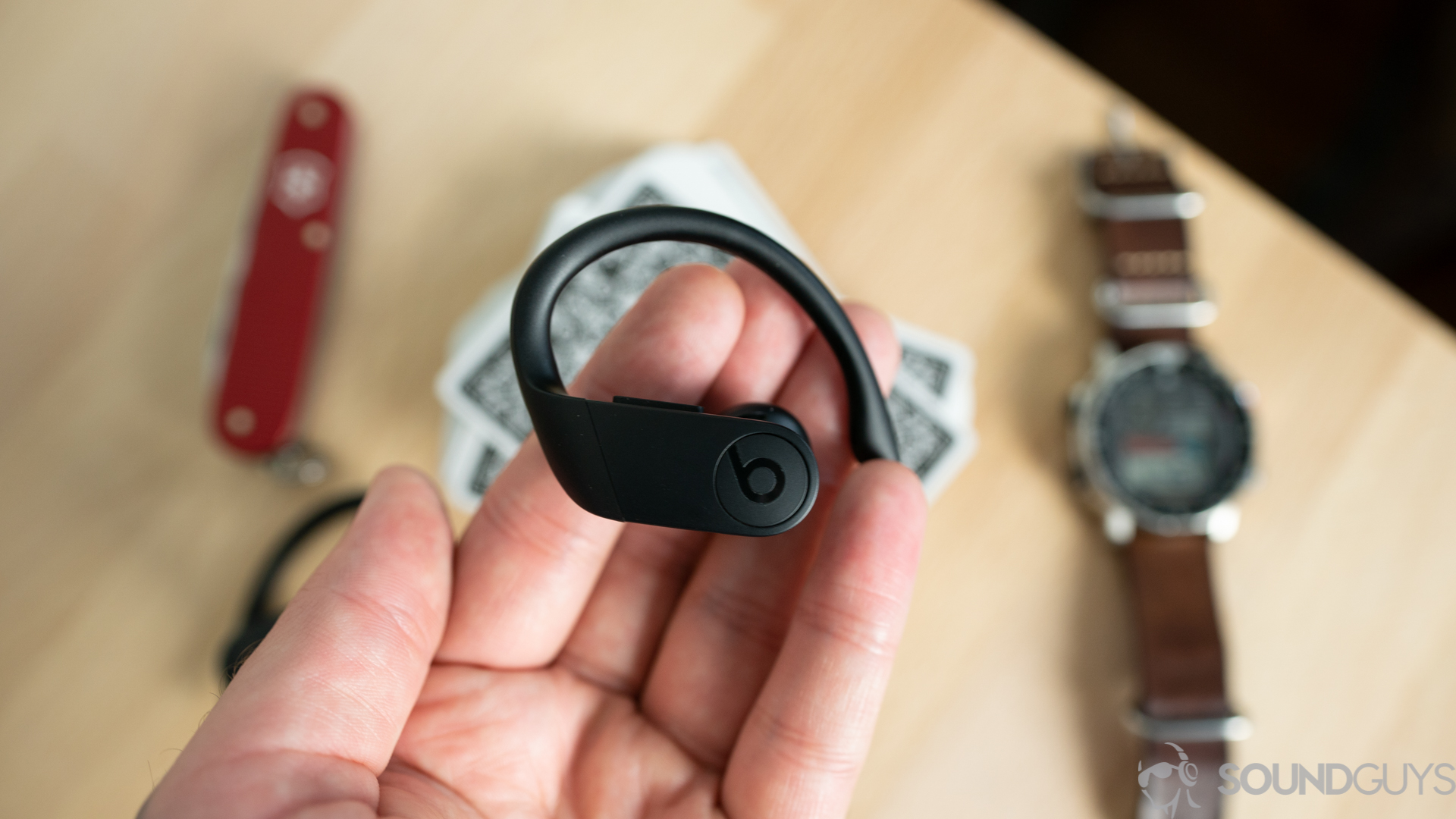
Both sets of earbuds are marketed toward the athletic crowd: they’re both IPX4-rated and provide a stable fit thanks to the malleable ear hooks. Although standard wireless earbuds certainly have their place, true wireless earbuds are better for exercise. No matter how comfortable the rounded Powerbeats cable is, it can’t compare to the feeling of absolute freedom when using true wireless workout earbuds.
Those with limited budgets will be perfectly fine in using the Beats Powerbeats, but if you’re an athlete unencumbered by financial constraints, you’ll be happy you went with the truly wireless Powerbeats Pro.
The Powerbeats has better battery life
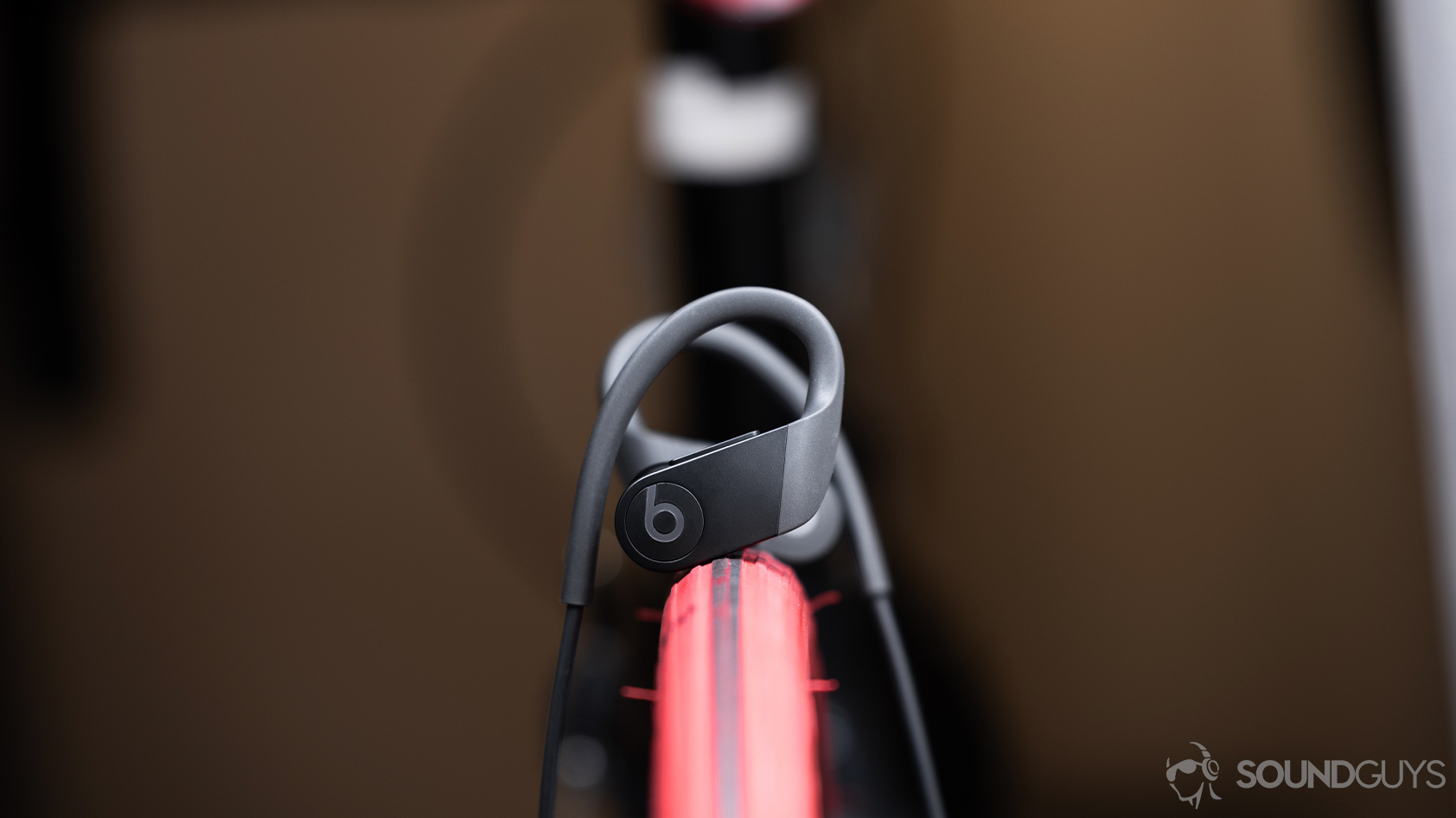
Comparisons don’t get more objective than battery life metrics, and this is an easy win for the Beats Powerbeats: true wireless tech is a power-hungry beast. The Beats Powerbeats Pro provides 10.52 hours of playback on a single charge, while the Beats Powerbeats lasts just shy of 18 hours. Both are impressive for their respective categories and, save for the Samsung Galaxy Buds Plus, the Beats Powerbeats Pro is among the best true wireless earbuds as it applies to battery life.
Both headsets depend on Apple’s proprietary Lightning input, and are equally efficient when it comes to Fast Fuel quick charging: just five minutes of charging yields 1.5 hours of playtime. Although the Powerbeats has the better standalone playtime, the Beats Powerbeats Pro is allotted an additional 24 hours of on-the-go battery life from the massive charging case. It depends on how you prioritize usage, but we’re giving the Powerbeats a win for its impressive endurance.
Does the Beats Powerbeats series stay connected?
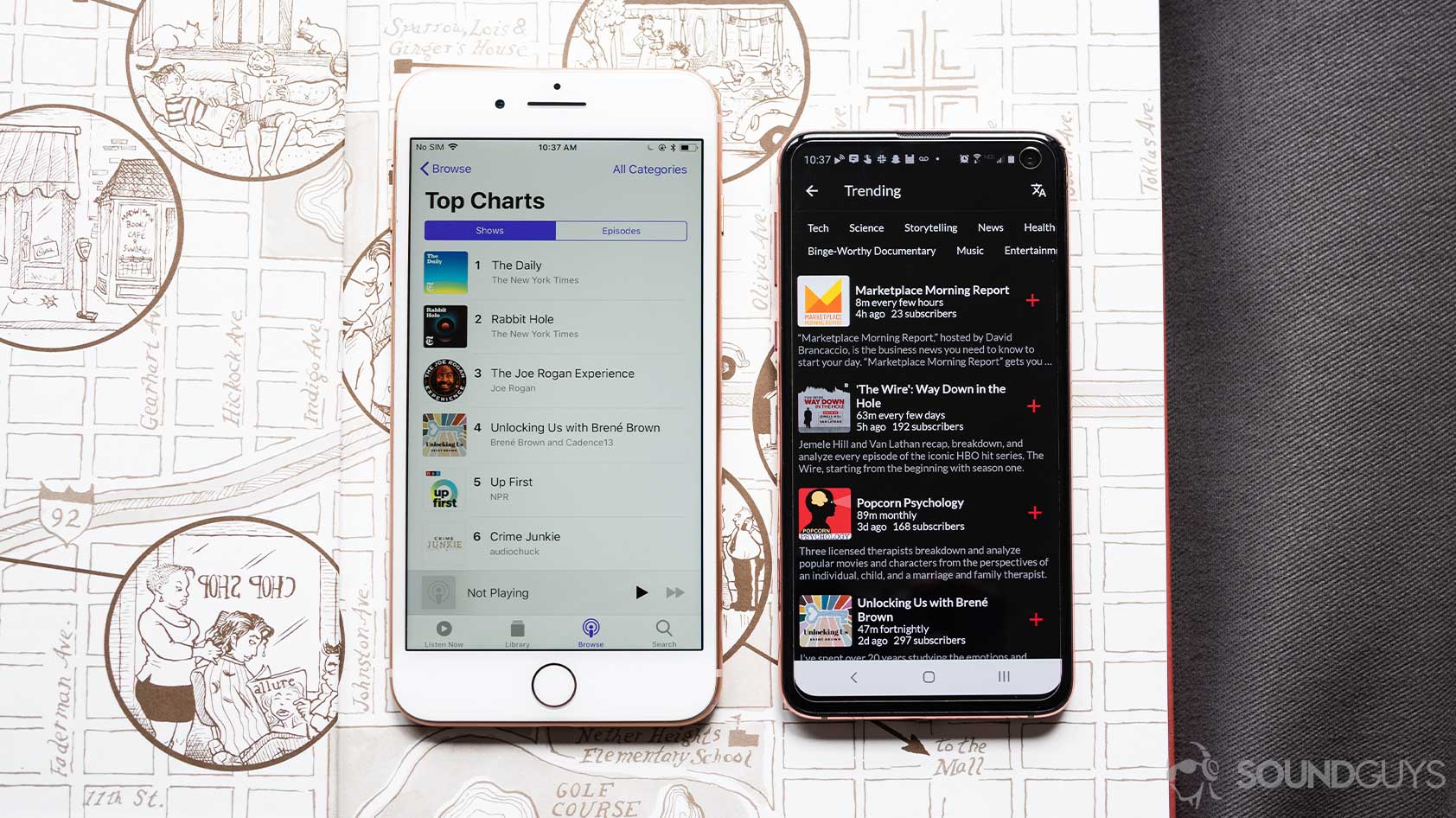
The same Bluetooth codecs are supported by these Class 1, Bluetooth 5.0 headsets: AAC and SBC. This means reliable, high-quality audio is relegated to iOS; AAC’s performance is shaky at best on Android. However, it’s unlikely for you to notice any compression artifacts from either headset when streaming to an Android phone, unless you crank the volume up. iPhone users benefit from lag-free videos which is great if you plan to stream shows from the treadmill.
Should you use the Beats Powerbeats or Beats Powerbeats Pro for phone calls?
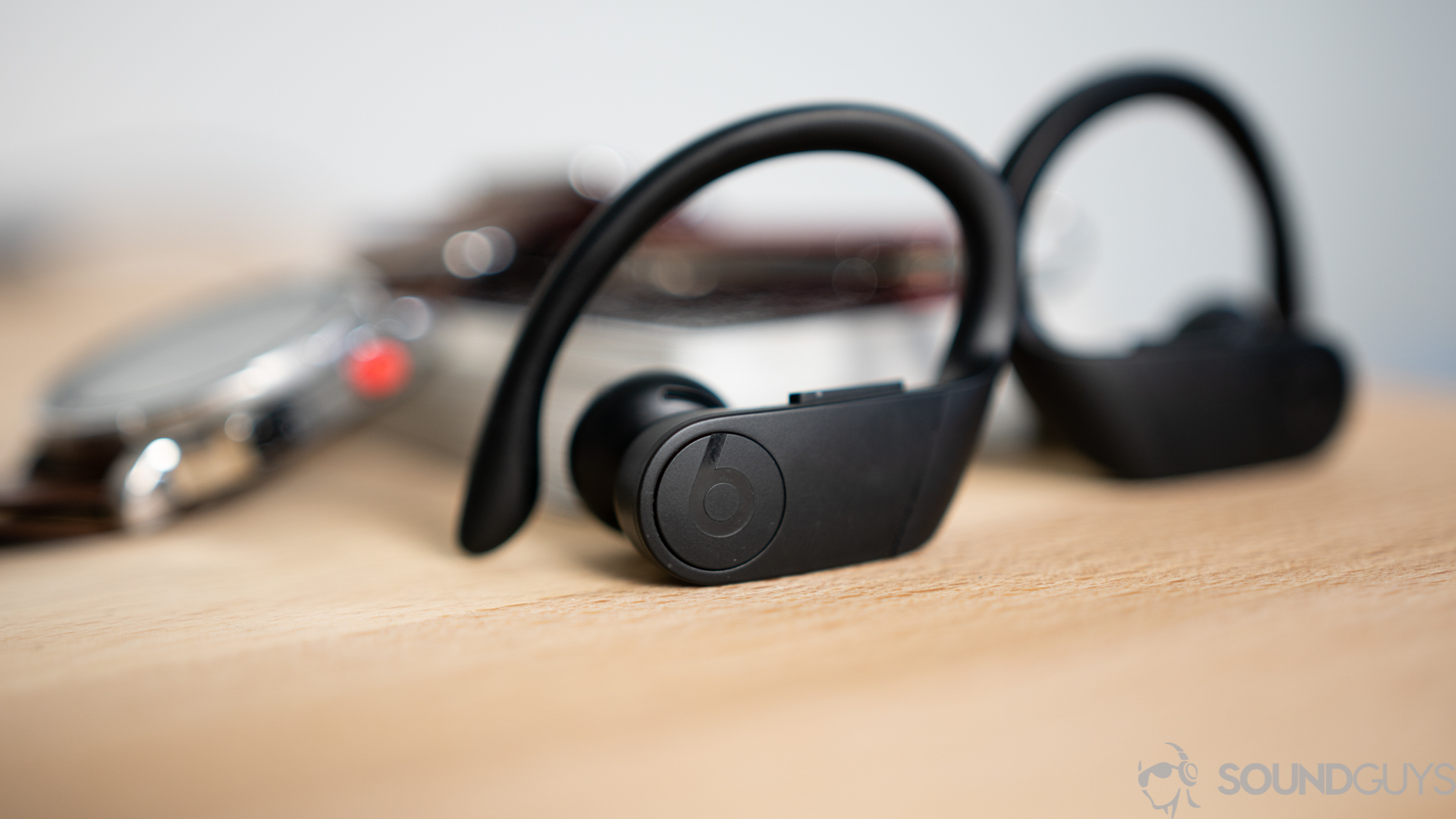
Microphone quality is straightforward: you’re going to sound significantly better when speaking through the Beats Powerbeats Pro than the standard Powerbeats. Both headsets de-emphasize particularly low frequencies (20-200Hz) in order to combat the proximity effect, but the Powerbeats Pro’s voice detecting accelerometers do a markedly better job of transmitting clear audio. Both systems clearly relay speech to the point where you’re not going to be misunderstood. Each also does a decent job of rejecting background noise. Take a listen to our audio samples below and rate them!
Beats Powerbeats microphone demo:
Beats Powerbeats Pro microphone demo:
Which microphone sounds better to you?
As of September 1, 2022, 93% of voters selected that the Beats Powerbeats Pro microphone sounds better than the Beats Powerbeats.
The Beats Powerbeats and Powerbeats Pro sound the same
Seeing as the earphones use the same drivers, it’s no surprise that the frequency response is virtually unchanged between the two models. As you can see in the charts, the Beats Powerbeats Pro and Powerbeats amplifies bass and sub-bass notes. This emphasis combined with the midrange dip means that vocals may sound about 75% as loud as the bass and treble notes. Higher vocal registers, in particular, may be hard to identify in instrumentally busy songs. (Editor’s note: these two measurements were taken on two different fixtures in two different locations by two different testers. The variation is most likely due to an unintentional use of differently-sized ear tips, and not a difference in the drivers themselves. The reason we have not updated the Beats Powerbeats to our current standardized testing is because the headset has been discontinued.)
This sort of frequency response isn’t hyper-accurate, but it isn’t trying to be. Instead, Beats went with a safe, consumer-preferred sound which may be described as “fun,” rather than analytical or accurate. It’s good for working out, as the added presence of low notes makes it easier to keep pace with the beat and stay motivated.
Isolation is virtually identical between the two sets of earbuds because, again, they’re pretty much the same. Although they’re unable to filter out sounds like A/C units and nearby voices effectively, they can block out general background noise, and are certainly more effective than the ear tip-less AirPods (2nd gen). You should invest in a pair of third-party memory foam ear tips to further improve isolation properties. These wear down faster but do a much better job of shutting the world out.
Beats Powerbeats Pro vs. Beats Powerbeats: Which Beats are best?
![Beats Powerbeats Pro[white background] Beats Powerbeats Pro product image on white background.](https://www.soundguys.com/wp-content/uploads/2019/05/Beats-Powerbeats-Prowhite-background.jpg)
Alright, folks, it’s clear that the Beats Powerbeats Pro wins this versus, but there’s something we haven’t addressed yet: value. The standard Powerbeats affords much of the same functionality as the Powerbeats Pro and costs 25% less. Unless you’re extremely irritated by feeling a cable on the back of your neck or feel the Powerbeats microphone quality unsatisfactory, then the Powerbeats will be perfectly fine for a wide range of users. However, listeners who love true wireless technology and want the additional 24 hours of portable playtime will be extremely happy with the Powerbeats Pro.
![Beats Powerbeats [whitebackground] Beats Powerbeats in gray against a white background.](https://www.soundguys.com/wp-content/uploads/2020/11/Beats-Powerbeats-whitebackground.jpg)
Stay within the Apple and Beats family, and get the Beats Flex
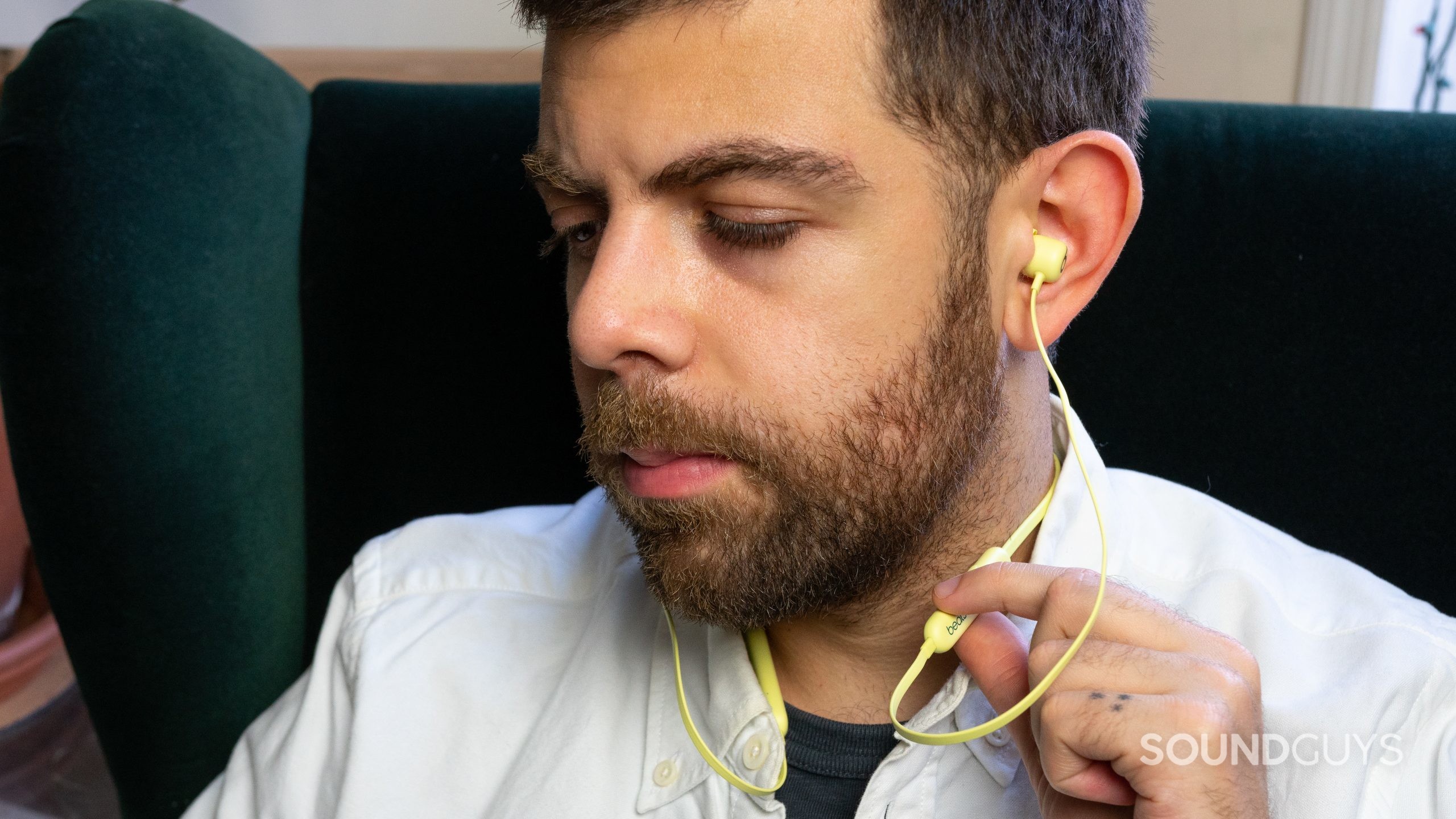
The Beats Flex is a great budget alternative to the Powerbeats. Though the sound quality isn’t as good, the headset stays connected to a smartphone and supports auto-play and auto-pause. The Beats Flex neckband houses Apple’s W1 chip for easy pairing with iPhones and device switching between Apple devices. If you’re all about the bass, these earbuds may just be the budget alternative for you.
Non-iPhone owners should consider earbuds from Samsung, Jabra, Sony, or Bose
The Samsung Galaxy Buds Pro comes with a wireless USB-C charging case that looks nearly identical to the one included with the polarizing Samsung Galaxy Buds Live. The Galaxy Buds Pro earbuds feature angled nozzles for a comfortable fit, an IPX7 rating, and very good active noise canceling. If you want a pair of earbuds that can do everything well, you should get these. If you have a Samsung Galaxy smartphone, you get a few exclusive goodies like Samsung 360 Audio, voice access to Bixby, and experimental features in the Galaxy Labs section of the Galaxy Wearable app.
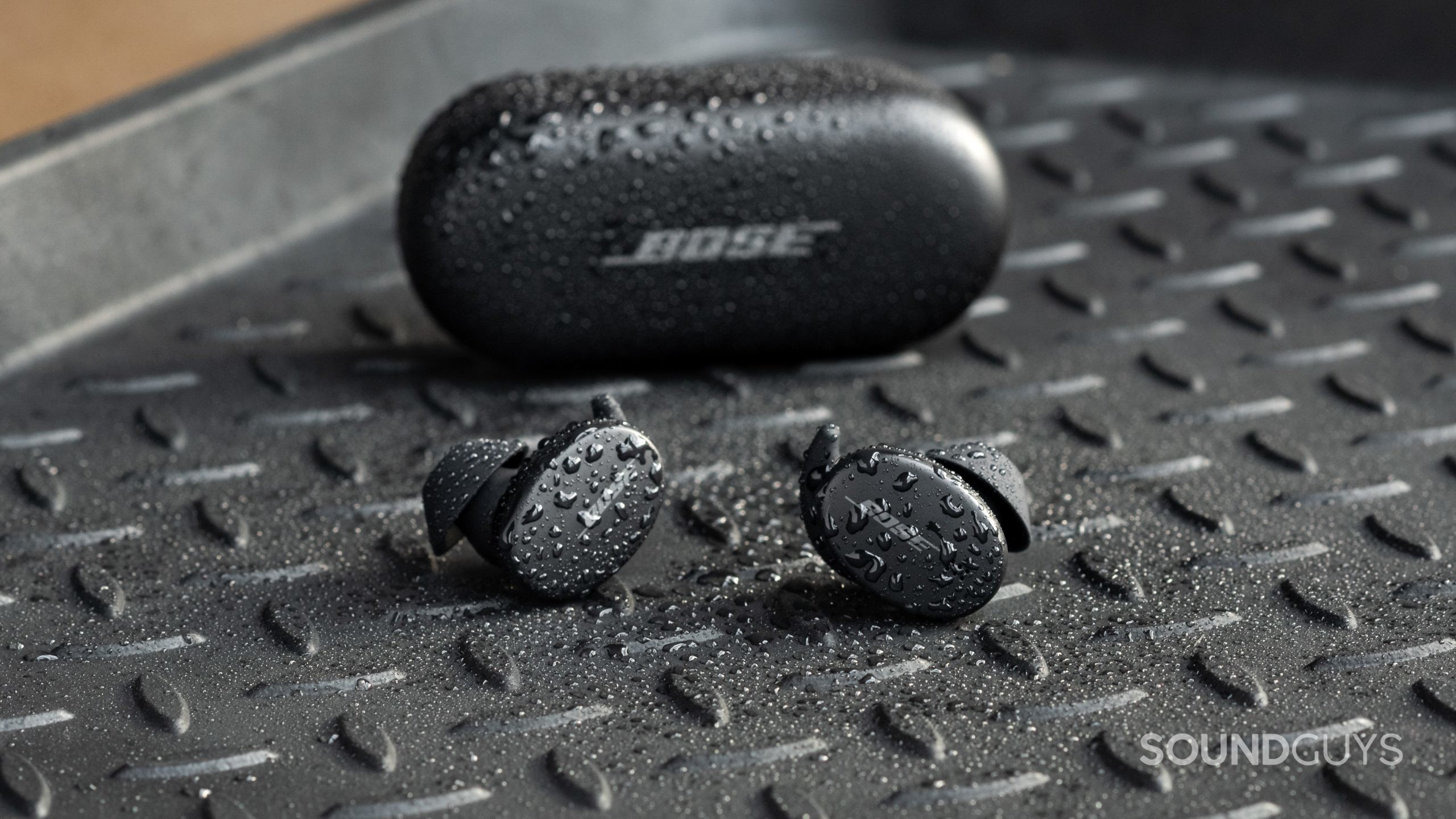
If you want a headset that plays well with all operating systems, consider the Jabra Elite 85t or Bose Sport Earbuds. Jabra’s earphones are very compact and have excellent hybrid noise canceling. You control playback and calls from each earpiece’s button, and can make all kinds of customizations in the free Jabra mobile app (iOS and Android). The default frequency response is very bass-heavy, but you can equalize this in the app too. The Bose Sport Earbuds directly competes with the Beats Powerbeats Pro, but has a completely different design: Bose forgoes an ear hook shape in favor of its StayHear Max ear and wing tips. This allows for a fairly compact set of earphones that stay comfortably in place no matter how you move. You can’t EQ the sound, but Bose Active EQ automatically equalizes bass and treble notes on the fly.
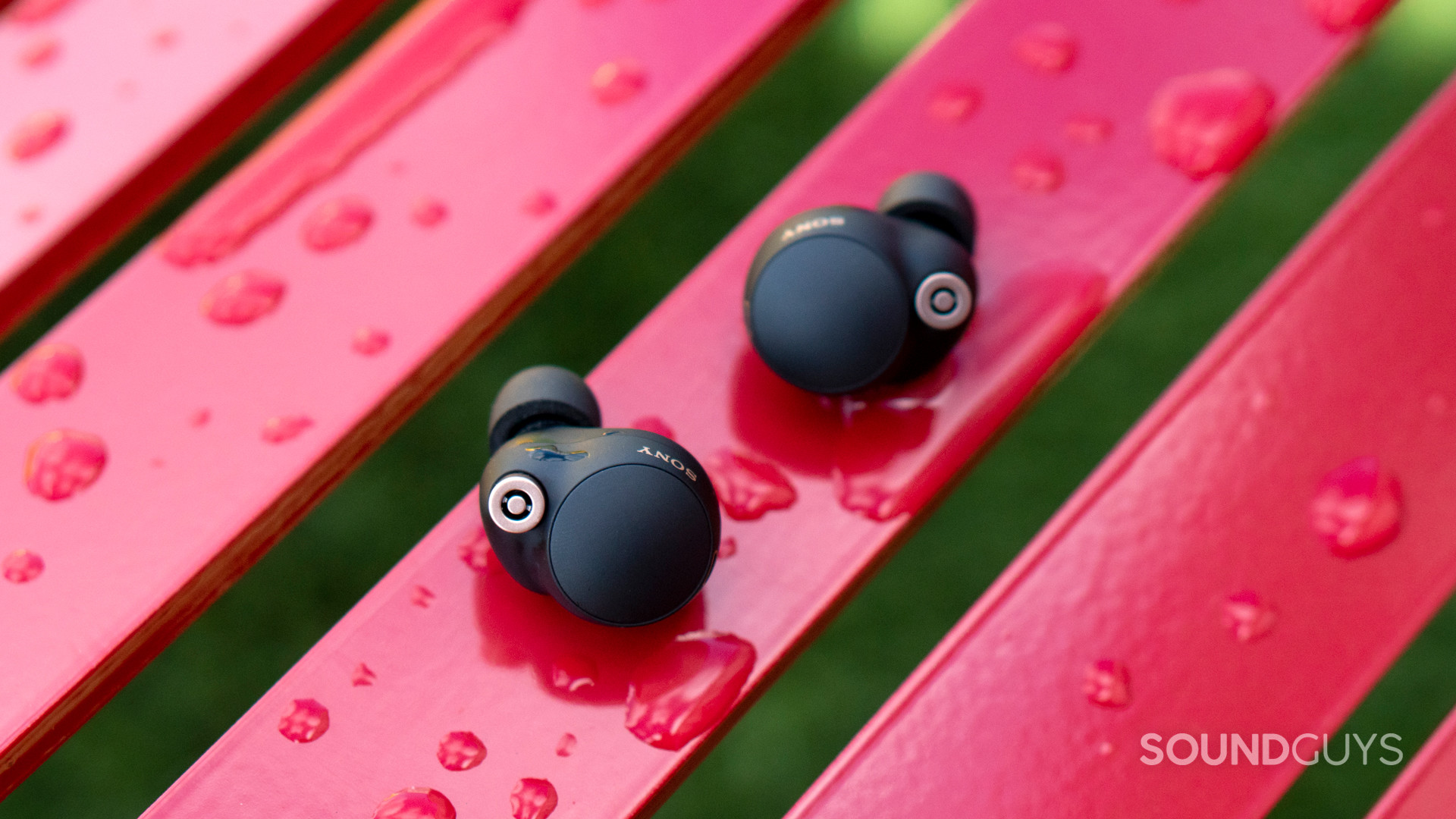
For those who need a pair of do-everything true wireless earbuds, the Sony WF-1000XM4 may be well worth your dollar. It features superb active noise cancellation performance, great sound quality, and deep app customization. It also features an IPX4 water-resistance rating, meaning these buds will last through your workouts without breaking a sweat. At $228 USD, the Sony WF-1000XM4 isn’t the cheapest pair of buds out there, but will certainly satisfy those looking for the best of the best.
Frequently asked questions about the Beats Powerbeats vs. Beats Powerbeats Pro
If you want active noise canceling, the Sony WF-1000XM3 is definitely the way to go. The Sony earbuds also has better sound quality than the Powerbeats Pro, especially if you’re concerned with isolation. The major benefits of the Powerbeats Pro is the Apple compatibility, but if you don’t have an iPhone, you should probably go for the Sony earbuds. In addition, the Sony headset is considerably cheaper than the Powerbeats Pro. Then again, the Powerbeats Pro is much better suited to working out than the Sony WF-1000XM3 due to its ear hooks and IPX4 rating.
If you want to stick with the benefits of Apple products (i.e. the H1 chip) but you’re looking for over-ear headphones instead of earbuds, it may be worth considering. The sound quality and ANC quality of the AirPods Max is some of the best we’ve ever tested, certainly better than many Beats on-ears headphones. The AirPods Max has 40mm dynamic drivers, memory foam ear pads, Spatial Audio, which mimics surround sound, and a slew of other features. If you’re willing to pay $549 for the newest thing, it may be worth it.
Almost certainly not. While Beats is a big name and some of its products including the Beats Powerbeats and Beats Powerbeats Pro have good sound quality, it’s an overly expensive brand. You can often find products of the same (or even better) quality for much cheaper. For example, check out the Anker SoundCore Liberty Air 2, which is only $34.
Lucky for you, we have a whole article pitting the two against one another! But the TL;DR is this: the AirPods Pro has active noise canceling and lots of software features but it has horrible battery life. Both the Powerbeats Pro and AirPods Pro have Apple’s H1 chip and IPX4 ratings. Their sound signatures aren’t too different, but the Powerbeats Pro has that signature Beats bass boost. The AirPods Pro is more portable but the Powerbeats Pro is more stable in your ears.
Though the Beats Powerbeats3 was released as exercise earbuds, it does not have an official IP rating. Additionally, while the Powerbeats and Powerbeats Pro have H1 chip integration, the Powerbeats 3 has W1 chip integration, which makes for decreased power efficiency and lack of voice-activated Siri. The frequency response of the Powerbeats3 is more bass-heavy than that of the Powerbeats or Powerbeats Pro, which can severely degrade audio clarity depending on your music preferences. We still recommend the Powerbeats Pro out of all three options, but if money is a big factor, the Powerbeats3 is significantly cheaper than the other two choices due to age. And all three models support the same codecs: SBC and AAC.